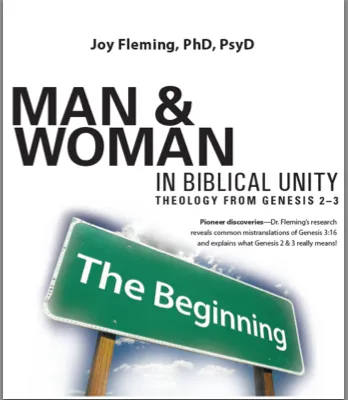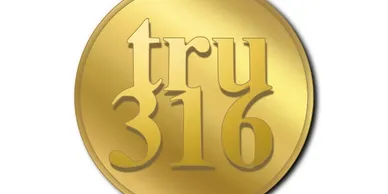
“On Marriage” in the Beginning from Man and Woman in Biblical Unity – Theology from Genesis 2-3, by Dr. Joy Fleming
Genesis 2:24 … serves as a commentary on marriage. The three verbs of the verse describe and define marriage in a non-specific and transcultural way. Yet distinct parameters are set. Three actions comprise the basic and essential elements constituting marriage, which is in turn the foundation stone of human society.
First, the man is the one who is the “abandoner:” he is the one who “forsakes” or “leaves” (‘azav) his own family unit. Such “abandoning” or desertion “of his father and mother” is observed and recognized by others. Reciprocal action on the woman’s part is not required.
Second, the man “cleaves,” “clings,” or “keeps close” (dabaq) to his woman. The verb expresses strong attachment in personal loyalty and commitment. (The same verb is used in Ruth 1:14 where Ruth clung to her mother-in-law. Not wanting to part, Ruth adopted the people of Israel, her mother-in-law’s people, as her own.) Here, the man’s devotion, affection and allegiance changes from two parents to one woman. He becomes loyal to her above all others. The expression “his woman” is not to imply possession or ownership, but rather expresses the exclusivity of the marriage commitment. The loyalty and strong emotional attachment of marriage are designed exclusively for one man and one woman.
The final action involves both the man and the woman who in concert “become one flesh.” What had been one, became two (the creation of the woman). Now, in marriage what was formerly two becomes one. “Flesh” emphasizes the physical; “one” the oneness or unity. The final act is physical union which consummates the marriage.
What is striking about verse 24 is the dramatic contrast between its provisions and the practices of both Hebrew culture and contemporary culture (where the parents—or the father—“give away” the bride). Gilbert Bilezikian writes,
—–
Singularly, nothing is said of the bride’s relationship with her own parents. She seems to be a free agent, in command of her own life. In the verse, the woman represents the stable point of reference. It is the man who moves toward her after leaving his parents. He attaches himself to the woman. She is not appended to his life. He is the one who adds his life to hers as he “cleaves” to her.[1]
—–
In summary, God completes the work of creation during Episode C. And the pinnacle of creation is woman. As the Episode started out, the man was alone in the universe, the only human being alive. God’s striking evaluation of this situation was that it was “not good.” By announcing ahead of time His intention to undertake such a special creation, God adds importance to the act and perhaps the equivalent of a drum roll (cf. Gn. 1:26) to the anticipation.
God describes her as ‘ezer kenegdo. These two terms are rich with meaning, describing both the woman and the relationship woman and man share. ‘ezer is often used of God, Maker of heaven and earth, who is our “help.” ‘ezer speaks of the woman’s strength. She will be a powerful entity, possessing strength and resources.
Kenegdo means “like him” and face-to-face (corresponding to him). The two genders of human being are not identical (like clones) but share a common entity. They are both human, and their likeness is emphasized over their minor differences. Facing one another, their standing is equal before each other and before God. They are partners and co-laborers together.
God could have made the two humans simultaneously from dust. But God chose instead to make one from the other, underlining their common essence. He could not have made the point more effectively. And marriage underscores this fact once again. God took one and made two. In marriage, two join to become one.
[1] G. Bilezikian, Beyond Sex Roles: What the Bible Says About a Woman’s Place in Church and Family (Grand Rapids, MI: Baker, 1986), p. 34.

